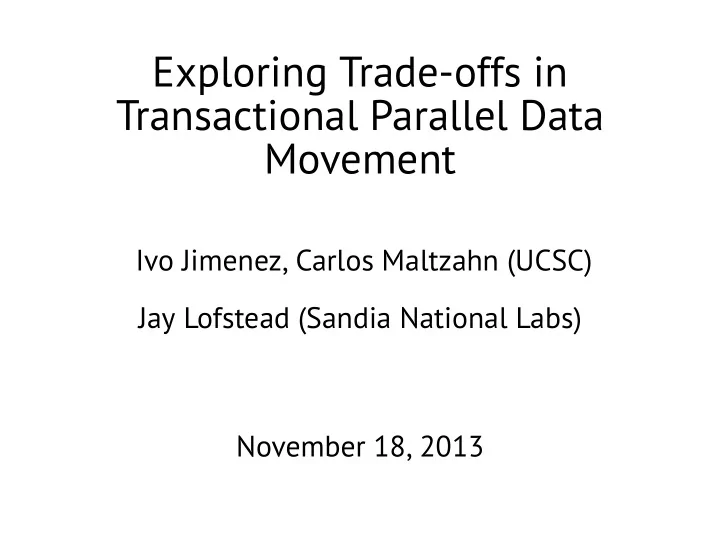

Exploring Trade-offs in Transactional Parallel Data Movement Ivo Jimenez, Carlos Maltzahn (UCSC) Jay Lofstead (Sandia National Labs) November 18, 2013
The need for Transactional Atomicity 1
The difference with Databases • In terms of ACID, we want: • A tomicity • D urability • Leave I solation/ C onsistency to the clients • Single Transaction (vs. thousands) • Massive amount of cohorts (vs. hundreds) 2
The approach • Assume that storage servers can do: • multi-version concurrency control • per-object visibility control • Clients handle consensus 3
Consensus Protocols 4
NBTA • N on- b locking T ransactional A tomicity • “HAT” formalization (Bailis et al. VLDB 2014) • In the context of Highly-available systems • Can also be applied in synchronous systems to achieve very low overhead 5
Features Protocol Fault Model Block Async Replication NBTA none Yes No No 2PC fail-stop Yes No No 3PC fail-stop No No No Paxos fail-recover No Yes Yes 6
Our goal • One-size-fits-all solution won’t work • Let users pick based on their needs: • Length of job • MTTF • fault modes • etc • We want to explore trade-offs and characterize protocols based on the user needs 7
Preliminary Evaluation 8
Future Work • Incorporate fault-tolerance • Cohort failure: can recover individually • Coordinator failure: 3PC, Paxos • Coordinate asynchronously • No need to wait for global consensus 9
Related Work • DOE’s Fast Forward Storage and I/O. The FastForward approach is similar to the NBTA protocol. • Fault-tolerant MPI make use of consensus protocols to identify faulty processes. • Recovery in multi-level checkpoint restart. 10
Thanks! 11
Recommend
More recommend